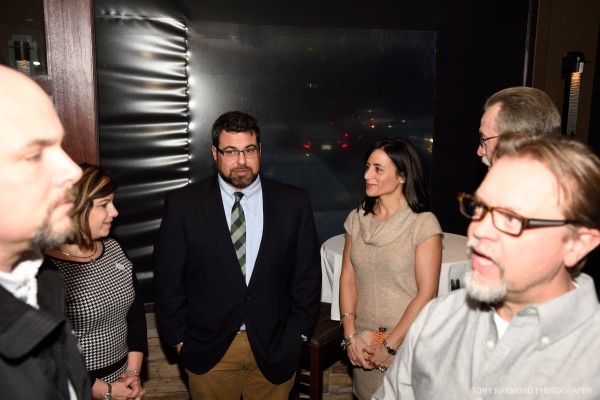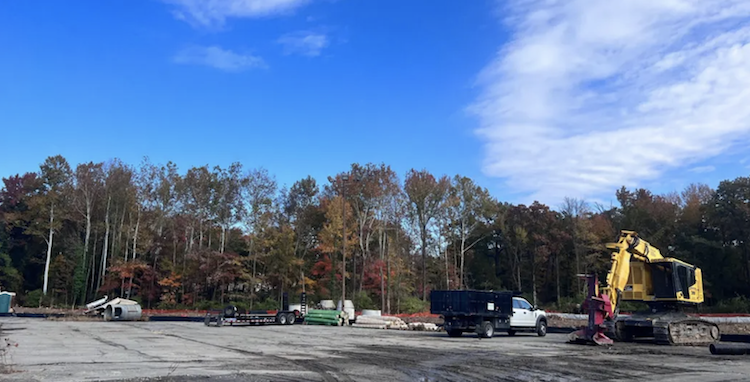
Clean Water Partnership Launches Mentor Protégé Program
February 4, 2016
A New Funding Strategy from the Clean Water Partnership P3
May 3, 20162/18/2016
Public-Private Partnerships Today
In today’s public finance landscape “flat” is the new “up.” States and localities can expect slow revenue growth for the foreseeable future. Infrastructure is one of the biggest challenges in this new environment. Public demand for new roads, bridges, schools and other critical infrastructure is higher than ever. But these projects require upfront money that many governments simply don’t have. Infrastructure maintenance is an even bigger issue. During the most recent recession, many states and localities scaled back routine capital maintenance and repairs. Although necessary at the time, this cutback strategy will lead to much higher infrastructure costs in the future.
For these and other reasons, public-private partnerships (P3s) have emerged as a reliable method for infrastructure finance. In a typical P3, a single private partner finances, designs, builds and operates in exchange for fees and some or all of the revenues the project generates over an extended period of time. This is quite different from the traditional model where governments finance infrastructure with public debt, and then write separate contracts for design, construction and maintenance, usually with different private partners.
P3s offer governments access to private sector capital. That access allows infrastructure investment to happen where it otherwise might not. P3s also provide private partners with access to predictable streams of government revenue. That’s an attractive proposition in today’s volatile, uncertain, low-yield investment environment.
P3s work when the private partner takes on substantial risks that otherwise reside with the public partner. This often means preparing for the unexpected. What happens if the project generates less revenue than projected? What if new elected officials no longer support the project? And so on. When P3s fail, it’s usually because these risks were not properly identified, measured and assigned.
That’s why “innovation” in P3s has tended to mean shifting risk between partners in creative ways: complex leasing arrangements to protect public ownership of public assets; financial reserves to protect against contingencies; “availability payments” and other financial guarantees for private partners; and so forth. Critics often point out that innovative risk-shifting rarely produces more effective P3s.
From Risk Shifting to Risk Sharing
Some recent cases stand out because they illustrate a new approach to P3s. We might call this approach “risk sharing” versus “risk shifting.” P3s developed through this next-generation approach tend to have three things in common.
1. They broaden policy objectives. State and local policymakers often think of infrastructure as an end unto itself. Highways, for instance, are designed to move commuters as quickly as possible. A highway project is successful if its built on time, on budget and with minimal traffic disruption.
Some governments have turned to P3s to broaden the scope of the policy goals that infrastructure projects can help achieve. Infrastructure is no doubt an important end unto itself, but it’s also one of state and local governments’ most powerful tools to achieve crucial public policy goals.
It fuels economic development by getting people to work. It safeguards public health by ensuring a safe water supply. It helps protect the natural environment. It can bring badly needed investment to underserved communities. Some next-generation P3s build these broader policy objectives directly into the P3 arrangement.
How does this promote better risk sharing? Because it focuses the P3 on goals that citizens want to support. Finishing a project on time is not an inspiring policy goal. Investing in the future workforce is. When policymakers, taxpayers, the business community and other stakeholders share in policy goals a P3 is attempting to advance, they share the risks rather than shift them.
2. They engage the private partner early. Many governments engage a private partner once they’ve defined a P3’s goals and objectives. In this new model, the government engages the private partner as soon as possible.
In the past, most P3s were about cost savings through integration. By having one private partner manage design, construction and maintenance, governments could realize new efficiencies and savings. That P3 model still makes sense for some projects.
But as the P3 landscape has evolved, many private partners have developed into full-service P3 providers. They offer capabilities far beyond design and construction. They can help define the project’s goals, identify financing sources otherwise not available to governments, develop cutting-edge design elements, and propose ways to measure project performance and success. Engaging a private partner with these capabilities early ensures the best expertise in the industry is brought to bear on the project.
This promotes risk sharing because it allows both the public and private partners to identify their shared interests, strengths and risks at the outset. If governments know they’re choosing from the best available options, they’re more likely to believe the risks are properly shared.
3. They pay for services, not products. In traditional P3s, engaging a private partner is a lot like hiring a carpenter to build a house. You tell the carpenter what you’d like, they give you an estimate for the job and they deliver a product that ensures their expected profit. Sometimes this one-off transaction approach works for P3s. When it doesn’t work, it’s because the project doesn’t achieve the desired outcomes or costs more than it should, and it’s up to the government to manage those risks.
Some governments have turned to P3s to broaden the scope of the policy goals that infrastructure projects can help achieve. Infrastructure is no doubt an important end unto itself, but it’s also one of state and local governments’ most powerful tools to achieve crucial public policy goals.
With next-generation P3s, engaging a private partner is more like hiring a general contractor to build your home and maintain it for the foreseeable future. The private partner handles the project’s planning, design, permitting, financing, procurement, staffing, operations, maintenance and performance measurement. They have no financial interest in the project’s real estate or other assets. Instead, they’re paid a predictable fee to ensure the project meets some pre-determined operating goals over an extended period of time. If they don’t meet those goals, they don’t get paid. If they exceed those goals, surplus savings are reinvested into the project for greater sustainability, which incentivizes additional performance on broader policy objectives.
Conclusion: Addressing the Risk
All infrastructure projects require governments to take risks. Public-private partnerships offer an opportunity to share those risks with the private sector. Some recent cases have shown that an emerging P3 model — one that emphasizes an expanded view of policy objectives, engaging the private partner early and P3s as a professional service — has the potential to address some of the long-standing concerns about how governments address the risks of P3s. Some governments have turned to P3s to broaden the scope of the policy goals that infrastructure projects can help achieve. Infrastructure is no doubt an important end unto itself, but it’s also one of state and local governments’ most powerful tools to achieve crucial public policy goals.
P3 in Action: Prince George’s County Storm Water Infrastructure Redevelopment
Prince George’s County, Md., is one of the fastest-growing counties in the U.S. As with all communities near Chesapeake Bay, strict federal and state regulations limit how much storm water it can send into nearby waterways. At the same time, the county’s rapid growth has heightened the demand for new pavement, sidewalks, rooftops and other impermeable surfaces that create new storm water run-off. Faced with a backlog of storm water repairs and retrofits, lawsuits and regulatory pressure, Prince George’s County decided to turn a liability into an opportunity to address broader policy objectives for local economic development.
Today’s “green” storm water infrastructure can help address this challenge. These new systems are designed to treat water before it flows into a natural waterway. Rain gardens capture and naturally filter rain water through soil and roots. Bioswales (landscape elements designed to remove silt and pollution from surface run-off water) channel run-off through natural paths on the ground that collect sediment and other pollutants. Rooftops covered with grass and other vegetation capture rain water before it hits the ground. These innovative solutions can be integrated into redevelopment projects on both public and private property. When properly designed, they can also beautify a neighborhood and improve safety by clearly identifying pedestrian walkways and rights of way.
Of course, these investments are expensive and difficult to build. Revenue sources such as storm water utility fees can cover some of the upfront costs, but not at a large scale. Even more challenging is that a network of green storm water infrastructure is really thousands of tiny, individual, interconnected projects. To build out such a system requires a massive and expensive coordination effort.
That’s why in 2015 Prince George’s County engaged Corvias Solutions in a 30-year P3 known as the “Clean Water Partnership,” a $100 million commitment for the planning, design, construction and maintenance of storm water infrastructure to achieve compliance with regulatory permit requirements. This partnership will allow the county to expedite a large portion of its long-term storm water infrastructure capital plan, while creating a long-term commitment for local economic development of a green economy.
Like other P3s, this arrangement shares risk through performance. But unlike most other P3s, Corvias is paid only if it meets those targets. Some of those targets focus on the amount and quality of storm water run-off. Perhaps more importantly, the deal requires at least 35 percent “local” disadvantaged, minority and women-owned business participation in the design, construction and maintenance of these new storm water projects. It also calls for Corvias to invest in the local workforce development, local contractor capacity and mentoring to meet the project’s delivery needs. Corvias only earns its full capped fee if it exceeds these socio-economic targets, and all savings and efficiencies are automatically re-invested in the project. That’s where the risk sharing occurs.
For Corvias, this P3 is an opportunity to leverage its unique expertise in managing large, decentralized projects. And unlike many other P3s, as a private partner it does not have a financial interest in the actual storm water infrastructure. The county owns all the infrastructure and real estate. Corvias is focused on designing, procuring, coordinating and staffing these infrastructure projects. According to Adam Ortiz, director of Prince George’s County Department of the Environment, “Both the private and public sectors have strengths that we can leverage for the common good. Through this partnership, we will meet our clean water requirements with more speed, more jobs and more savings.”
This piece was developed and written by the Governing Institute custom media division, with information and input from Corvias. Click here to download a copy of the entire issue brief and to see additional case studies of current P3s in action.




